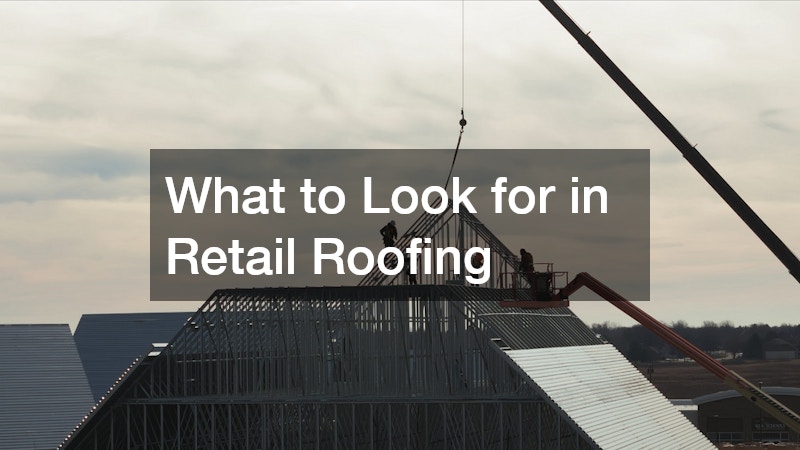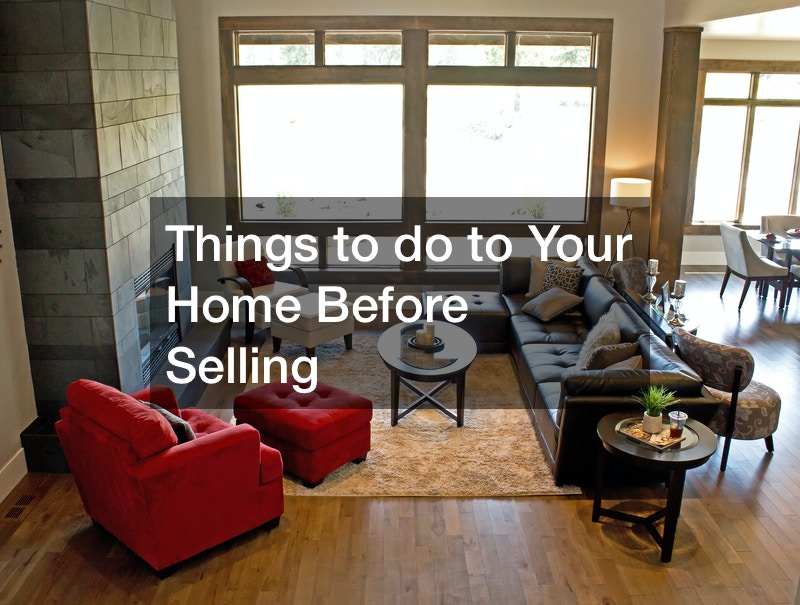
In this article, we will explore the essential aspects of retail roofing, providing insights into what you need to consider when choosing and maintaining a roof for retail spaces. The roof of a retail building does more than just protect the structure; it plays a vital role in energy efficiency, curb appeal, and even customer perception. From selecting the right materials to ensuring regulatory compliance, every element impacts the success and longevity of your commercial property investment.
A well-maintained roof not only shields the structure from the elements but also contributes to cost-efficiency through energy savings and minimal repair needs. Choosing the right roofing materials and working with experienced roofers can make a substantial difference in how well your retail property performs over time.
What are the Different Types of Retail Roofing Materials?

Traditional Asphalt Shingles
Asphalt shingles remain a popular choice for retail buildings, especially smaller storefronts and standalone shops. Their affordability and ease of installation make them appealing. While more common in residential applications, certain commercial structures use architectural-grade asphalt shingles for improved durability and aesthetics. When it comes to asphalt roofing, it’s essential to choose high-quality materials and ensure proper installation to avoid frequent repairs.
Metal Roofing Options
Metal roofing is increasingly favored in the retail sector for its longevity, fire resistance, and contemporary appearance. Aluminum, steel, and copper options offer different benefits. Metal roofs often feature interlocking panels that provide excellent wind resistance, making them ideal for locations with harsh weather. In addition to their strength, metal roofing materials can also be paired with an undercoating service to improve sound insulation and protect against corrosion.
Single-Ply Membranes
Single-ply membranes such as TPO (thermoplastic polyolefin) and EPDM (ethylene propylene diene terpolymer) are widely used in flat or low-slope retail roofing designs. These materials are lightweight, flexible, and offer excellent resistance to UV radiation and chemicals. Flat roofing systems like these are commonly installed in strip malls and shopping centers, providing seamless coverage and ease of maintenance.
Built-Up Roofing Systems
Built-up roofing (BUR) systems have been a traditional option for commercial structures with flat roofs. They consist of alternating layers of bitumen and reinforcing fabrics, providing durability and waterproofing. These systems are particularly well-suited for roofs that experience foot traffic, such as those with HVAC units or attached decks that are used for customer access or employee breaks.
Eco-Friendly Roofing Materials
Sustainable options, including green roofs and recycled content materials, are gaining traction in retail environments. These materials help reduce the urban heat island effect, improve building insulation, and even offer tax benefits. Many eco-conscious retailers integrate green roofs with professional insulation service to maximize energy efficiency and reduce environmental impact.
How to Assess the Durability of Retail Roofs?
Understanding Material Lifespan
Different roofing materials offer varying lifespans. Asphalt roofing typically lasts 15–30 years, while metal roofing can endure for over 50 years. Single-ply membranes generally last between 20 to 30 years, depending on maintenance and environmental conditions. Knowing these lifespans helps retail owners plan for replacement and long-term costs.
Weather Resistance Characteristics
Retail roofs must be resilient against a range of weather conditions, from heavy rainfall to intense heat. Metal roofing stands out for its resistance to wind and fire, while single-ply membranes excel in UV protection. An added undercoating service can enhance moisture protection, particularly in climates prone to heavy precipitation.
Installation Techniques Impact
How a roof is installed significantly influences its longevity. Improper installation can lead to early failure, regardless of the quality of materials used. Reputable roofers with commercial experience should be employed to ensure best practices are followed during installation. Attention to detail, such as correct sealing and flashing, makes a critical difference in long-term performance.
Maintenance Practices
Routine upkeep, such as cleaning gutters, sealing minor cracks, and performing periodic roof inspection, prevents small issues from becoming costly problems. In particular, flat roofing systems benefit from scheduled inspections to identify potential leaks or structural weaknesses early on.
Manufacturer Warranty and Support
Always review the manufacturer’s warranty before selecting roofing materials. Warranties vary in terms of coverage, duration, and conditions. Understanding what is covered, and ensuring the installation meets warranty standards, can save a lot of hassle and cost down the line.
What is the Cost of Retail Roofing?

Material Costs
Material costs can vary widely based on the type of roofing selected. Asphalt roofing is typically the most budget-friendly, while metal and green roofing materials come at a higher upfront cost. Single-ply membranes and built-up systems fall somewhere in between. When evaluating options, it’s essential to balance price with longevity and maintenance needs.
Labor Costs
Installation labor is another major component of roofing costs. The complexity of the project, building height, and chosen materials all affect the final labor quote. Highly skilled roofers with experience in commercial projects may charge more, but their work often results in fewer long-term issues.
Long-Term Maintenance Costs
Over time, roofs require maintenance and occasional repair. Flat roofing systems, for instance, need regular inspections to avoid ponding water or membrane splits. Budgeting for ongoing maintenance—including roof inspection and box gutter replacement—can reduce the likelihood of needing emergency roof repair services.
Cost-Effective Solutions
Some retail owners look for cost-effective solutions by combining durable materials with efficient installation methods. For example, pairing single-ply membranes with a robust undercoating service can provide a longer-lasting, energy-efficient system without breaking the bank.
Calculating Return on Investment
A high-quality roof can deliver a strong return on investment through energy savings, reduced repair costs, and enhanced property value. Energy-efficient materials paired with professional insulation service reduce heating and cooling expenses, making the building more cost-effective over time.
How to Choose the Right Roofing Contractor?
Checking Credentials and Licensing
Ensure any contractor you consider holds proper licensing and certifications for commercial roofing. Working with verified roofers provides peace of mind that the project will meet local codes and manufacturer requirements.
Evaluating Experience and Expertise
Retail roofing projects require specialized knowledge. Ask potential contractors about their experience with flat roofing, metal roofing, and box gutter replacement. Look for a contractor who can also provide emergency roof repair services, as timely response to issues can prevent further damage.
Reading Customer Reviews and Testimonials
Online reviews and client testimonials can provide valuable insight into a contractor’s reliability, professionalism, and workmanship. Consistently positive feedback from other business owners is a strong indicator of quality service.
Comparing Quotes and Services
Gather quotes from several contractors and compare them based on scope of work, materials proposed, and included services. Some roofers offer bundled services like regular inspections or undercoating service, which can add long-term value.
Ensuring Comprehensive Insurance Coverage
Always verify that the contractor carries liability insurance and workers’ compensation coverage. This protects both you and the contractor in the event of property damage or accidents during the project.
How Important is Energy Efficiency in Retail Roofing?
Benefits of Energy-Efficient Roofing
Energy-efficient roofing reduces operational costs, extends HVAC system life, and contributes to environmental sustainability. Retail spaces with efficient roofing often experience more consistent indoor temperatures, improving customer comfort.
Reflective and Cool Roofing Options
Cool roofing materials reflect more sunlight and absorb less heat, reducing indoor temperatures. These include specially coated metal roofing and white single-ply membranes. These materials can be combined with a proper insulation service to maximize efficiency.
Integrating Insulation Solutions
Proper insulation minimizes heat transfer, keeping interiors cooler in summer and warmer in winter. Many retail buildings benefit from integrated insulation systems installed beneath the roof deck or as part of the roofing assembly.
Green Roofing Innovations
Living roofs or green roofs incorporate vegetation layers and offer excellent insulation and stormwater management benefits. These systems are ideal for retailers aiming to showcase eco-conscious values.
Regulatory and Tax Incentives
Energy-efficient upgrades may qualify for local or federal tax incentives. Research available rebates and consult with an expert to determine if your roofing project is eligible for financial benefits.
What are the Signs of Retail Roof Damage?
Leaks and Water Stains
Interior water stains or ceiling leaks are clear indicators of roofing issues. These often originate from punctures, failed seams, or clogged drainage systems. Addressing them early can prevent the need for major emergency roof repair.
Energy Bill Increases
Unexplained increases in energy bills can point to insufficient insulation or compromised roofing materials. A thorough roof inspection can help identify gaps or failures in the system.
Visible Deterioration and Wear
Cracked membranes, missing shingles, or rusted flashing signal aging or weather-damaged roofing materials. Retailers should be vigilant in spotting these issues and seeking timely repairs.
Mold and Mildew Presence
Poor ventilation and leaks can lead to mold growth, particularly in under-insulated areas. Mold not only damages structures but can pose health risks to customers and staff.
Structural Issues
Sagging rooflines or damaged decks beneath the roofing material may indicate underlying structural problems. These require immediate attention to maintain building integrity.
How Often Should Retail Roof Inspections be Conducted?
Scheduled Inspection Frequency
Retail roofs should undergo professional roof inspection at least twice a year—preferably in spring and fall. This helps catch seasonal damage and prepare the roof for upcoming weather changes.
Pre-Sale and Post-Purchase Inspections
When buying or selling a commercial property, a detailed roof inspection ensures transparency and helps negotiate fair pricing.
Weather-Related Inspections
After severe weather events such as hailstorms or heavy snow, an inspection can detect issues that may not be visible from ground level.
Regular Maintenance Checks
Incorporate inspections into your routine maintenance plan to monitor aging signs, ensure drainage systems are working properly, and schedule any necessary undercoating service.
Emergency Inspections
Unexpected leaks or structural damage necessitate an immediate roof inspection. Quick identification and response can limit the need for extensive emergency roof repair.
What are the Most Common Retail Roofing Issues?
Ponding Water on Flat Roofs
Flat roofing systems often suffer from ponding water due to improper slope or drainage. This standing water can deteriorate roofing membranes and lead to leaks.
Membrane or Material Cracking
UV exposure and temperature fluctuations can cause cracks in roofing materials. These cracks allow moisture intrusion and require prompt sealing or replacement.
Improper Installation Concerns
Incorrectly installed flashing, seams, or insulation can lead to premature roof failure. Always work with roofers who have experience with commercial systems and building codes.
Drainage Problems
Clogged or poorly designed gutters lead to water backup. For retail buildings with box gutters, timely box gutter replacement ensures water is efficiently diverted from the roof.
Pest Infestations
Birds, rodents, and insects may nest in damaged roof areas, compromising structural integrity and causing sanitation concerns.
How Can Retail Roofing Enhance Curb Appeal?
Choosing Aesthetic Roofing Colors
Selecting roofing colors that complement your building’s facade can enhance its visual appeal and attract more foot traffic.
Architectural Roofing Styles
Different roofing styles, such as sloped or modern flat roofing with clean lines, contribute to a building’s overall design.
Incorporating Skylights and Natural Lighting
Skylights not only brighten interior spaces but can also give the exterior a polished and upscale appearance.
Design Integrations with Storefronts
Roof designs that flow seamlessly into awnings, signage, or decks add cohesion and elevate brand perception.
Matching Roofing to Brand Identity
Color, shape, and material can all reflect brand personality. A luxury brand might opt for metal roofing, while an eco-brand may choose green roofing.
How to Ensure Compliance with Building Codes?

Understanding Local Building Regulations
Building codes vary by location and dictate specific requirements for fire resistance, drainage, and wind resistance.
Permitting and Approval Processes
Always acquire the proper permits before starting roofing work. Skipping this step can lead to fines and project delays.
Contracting with Code-Savvy Professionals
Experienced roofers will be familiar with local building codes and ensure that installations meet all legal requirements.
Regular Updates on Code Changes
Stay informed on updates to roofing codes that may affect materials or installation methods.
Documentation and Record-Keeping Practices
Keep detailed records of all roofing work, including inspections, repairs, and replacements. This can streamline future transactions or insurance claims.
Final Thoughts
In conclusion, selecting the appropriate roofing solution for your retail space is crucial for both functionality and aesthetic appeal. With the right materials, regular maintenance, and professional oversight, retail roofs can provide long-term protection, energy efficiency, and visual impact. Whether you’re addressing box gutter replacement, investing in insulation service, or planning for emergency roof repair, every decision counts toward maintaining a safe, efficient, and inviting retail environment.



